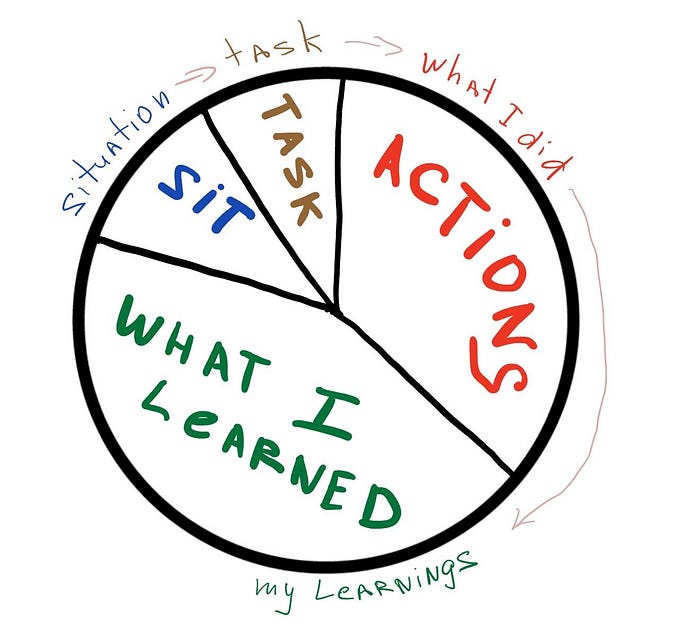Psychology of Design
How to create habit-forming products using the Hook Model
Using Behavioural Design techniques from Hooked: How to Create Habit-Forming Products, to increase customer engagement and retention.

If your business depends on humans interacting with your product, then you’re in the human behaviour business. And if you’re looking to drive customer engagement, then creating a habit-forming technology is something you must consider.
But what do we mean by habit? Let me iterate…
Every morning you might go through a routine of getting your coffee-fix, going out for a run, or checking your social media apps. We either consciously or unconsciously repeat these habits in our everyday lives.
Habits are learned behaviours from receiving a reward. For example, caffeine is a perk from drinking a cup of coffee; endorphins are the energising effects of running; trending news in your social media app is the result of scrolling through a ‘slot machine’ wall of endless content.
Cognitive psychologists define habits as “automatic behaviours triggered by situational cues”: Things we do with little or no conscious thought — Nir Eyal
We are accustomed to repeating all sorts of behaviours because they either reward us with a positive outcome or induce a form of relief — like a painkiller. The more satisfaction we gain from performing an action, the more likely we’ll repeat that activity — hence the habit.
To create a habit-forming technology, such as a game, a fitness app, or an online service, we can employ the Hook Model — a Behavioural Design framework.
Created by consumer psychology expert, Nir Eyal, the Hook Model teaches us how we can change behaviours in an ethical and useful way for people. Whether we’re looking to create or break habits, the Hook Model is a fascinating framework for behavioural change.
Defining the Hook Model

Are you building a vitamin or a painkiller?
This is a clichéd question that many investors ask founders eager to launch their new product or service to market. The correct answer is a painkiller, which solves an obvious need and relieves a specific pain. Vitamins, on the contrary, tend to appeal to users’ emotional needs and serve little functional purpose.
Now would you consider social media apps, such as Facebook, Twitter, Pinterest, and Instagram as vitamins or painkillers?
Before we answer the question, the term pain is a hyperbolic way of describing an itch, a feeling within the mind that causes discomfort until it is satisfied. So when we wake up with a desire to update ourselves on what’s occurring in our digital communities, we consume our apps as the painkiller to relieve our pain, or to scratch our itch, so to speak.
The ultimate goal of a habit-forming product is to solve the user’s pain by creating an association so that the user identifies the company’s product or service as the source of relief – Nir Eyal
The goal of the Hook Model is to create a habit-forming technology that provides some sort of relief – a painkiller. By creating a source of alleviation will drive continued use of the product or service, and ultimately increase the customer lifetime value (CLV).
To create a habit-forming product using the Hook Model, we must design for the sequence of four critical phases:
- Trigger
- Action
- Variable reward
- Investment
When users go through all four phases of the Hook Model, they will begin to associate the product or service as the source of relief. And that is when the habit is formed.
Trigger
The first phase in the Hook Model is the trigger, which can exist in the environment (external) or in the self (internal).
External triggers are things that users sense in their world which they can learn to associate with an action. For example, your smartphone pings or buzzes which attracts your attention.
Eyal identifies different types of external triggers for inviting users to perform the desired behaviour, including:
- Paid: marketing-driven and designed to acquire new customers or traffic. They usually include pay-per-click and affiliation programmes
- Earned: free that keep the product in the limelight. They can materialise as press mentions, hot viral videos, and featured App Store placements
- Relationship: the form of social influence, including word of mouth, product referrals, or Facebook likes
- Owned: exist within a user’s environment, such as an app icon, an email newsletter, or a push notification. They are accepted or created by the user, and prompt repeat engagement to form a habit
Internal triggers manifest automatically in the mind. They are programmed by performed actions that have resulted in a positive consequence. For example, the thought of keeping up to date on trending Facebook news may serve as an ‘inner-itch’ to login.
Eyal describes internal triggers as ‘the root cause of forming habits’. They essentially drive users into repeating behaviours.
Action
The second phase in the Hook Model is the action, which is the key behaviour you want users to perform. This could be opening a push notification, entering your daily calorie intake in your health and fitness app, or making your next move in a game like Clash of the Clans.
Eyal makes reference to B.J Fogg’s Behavioural Model, where motivation, ability, and the trigger/prompt are all integral to performing an action. Each of which must converge at the same moment for a behaviour to occur. However, if any of these elements are missing or inadequate, then the target behaviour will become more difficult to match.
Take the following scenario: your mobile phone rings but you don’t answer it because…
- The phone is buried in your bag and hard to reach (ability)
- The caller ID was a telemarketer or someone you didn’t want to speak to (motivation)
- The call was important but the ringer was silenced (trigger)
Variable reward
The third phase in the Hook Model is the variable reward — an unpredictable, positive consequence of the user’s performed action. For example, you unexpectedly receive a delightful message of praise for completing a task.
Unlike finite-variability where the reward is predictable, the variable form adds more excitement and anticipation – just like a casino slot machine.
Eyal describes three types of reward as building blocks for delighting users, including:
- Rewards of the self: intrinsic rewards, including self-mastery, proficiency, and completion — where we want to be the best we can. For example, in video games and online courses, signs of praise or encouragement are rewarded to players or students for completing an action
- Rewards of the hunt: satisfy our desire for conquest — the thrill of the chase! They tie in closely with the primary reinforcers that our brains have evolved over thousands of years; we have developed from tracking down prey to seeking new content on social media ‘slot machine’ walls
- Rewards of the tribe: satisfy our social desire for belonging. They keep us coming back to online communities, such as Facebook and StackOverflow. We gain great pleasure in receiving likes, comments, and approval on the content we post from our peers
Investment
The fourth and final phase in the Hook Model, investment, is critical for building habit-forming technologies. It adds long-term value to a product or service and is what helps increase the CLV.
The more users invest time and effort into a product or service, the more they value it. In fact, there is ample evidence to suggest that our labour leads to love — Nir Eyal
Investment is the time, effort, and personal information users contribute to the product to improve the overall experience. When we invest in a product, we anticipate future rewards. For example, Twitter users who have a high engagement frequency will likely receive more likes, followers, and relevant content.
As the level of investment increases (also known as stored value), users will feel greater commitment to using the product. This is the critical point when people become hooked.
What to do with the Hook Model
The Hook Model is designed to connect the user’s problem with the designer’s solution frequently enough to form a habit. To understand what to do with the Hook Model, Eyal has defined five fundamental questions:
- Internal trigger: what do users really want? What pain is your product relieving?
- External trigger: what brings users to your service?
- Action: what is the simplest action users take in anticipation of a reward, and how can you simplify your product to make this action easier?
- Variable reward: are users fulfilled by the reward yet left wanting more?
- Investment: what bit of work do users invest in your product? Does it load the next trigger and store value to improve the product with use?
Habit-forming or habit-changing?
While we have focused on how to influence repeated behaviours, the Hook Model can also be used for changing habits.
To break existing habits, including those that are deemed as distracting, harmful and unethical, we can create new positive ones. An example of this can be found in a unique work tool product: Let Me Think.
Changing habits with Let Me Think
A big problem for people at work, particularly those who sit at a desk all day, is that they are often distracted by push notifications, messages, and apps on their phones. It’s hard not to get distracted, and it’s hard not to turn off completely.
The Let Me Think work tool adopts the Hook Model to break habits of unconscious smartphone use. By employing the same phases including the trigger, action, reward, and investment, the product enables users to focus on tasks without interference, and therefore increase their productivity and wellbeing.

When a user wants to enter a work-only zone, they can access a second space on their smartphone: the think space. The new environment contains only chosen applications the user would like to access during work. This target behaviour enables them to work more efficiently yet without missing anything that’s important, such as an important message from their loved ones.
The distraction-free work experience involves a trigger-action association: users touch a totem (a small object) with their smartphone to launch their personalised think space. By performing this behaviour, users are rewarded with increased productivity and wellness. The more users invest in the product, the more they’ll reduce existing habits while forming a new positive one.
Ethics of creating a habit-forming product
Behavioural Design is a set of techniques for persuasion that should not be confused with coercion. So when designing for changing behaviours by using frameworks like the Hook Model, the habit must be voluntary and in line with want users want.
For example, social media apps use Behavioural Design to induce more frequent usage so it can increase advertisement revenue. This may be poorly aligned with what users actually wanted: social connection and a better sense of community.
Techniques you can use to increase the chance that someone changes their behaviour without forcing them to, or violating their autonomy or dignity — Boundless Mind
While Behavioural Design takes advantage of cognitive biases to motivate behaviour, it should not be used to deceive people into performing an action (also known as dark patterns) or even forming a habit that goes against their will. The code of practice includes respecting the user’s intrinsic rights to freedom of choice, autonomy, and dignity.
The four quadrants of manipulation
Eyal provides a simple framework called a Manipulation Matrix to help determine the best and most honest way to position a product to users. To use the matrix, you ask yourself the following questions:
- Would I use the product myself?
- Will the product help users materially improve their lives?

Within the Manipulation Matrix are four quadrants, each describes a type of ethical value that could be adopted for creating a habit-forming product.
- Facilitator: you want to create something to make people’s lives better. This includes facilitating a healthy habit for a product that you would want to use
- Peddler: you create products with ‘run of the mill’ incentives that no one really wants. Despite your altruistic ambitions, you lack the empathy and insight needed to create something users truly want
- Entertainer: you make addictive products that have no real life-changing value yet are fun to use. Just like a hit song, people will enjoy the product only for a short amount of time before they get bored and move on
- Dealer: you sell products that you do not believe will improve users lives. You wouldn’t use them yourself but are quite happy to earn some bucks from selling them. Eyal describes this as exploitation.
Which one of the above ethical values would you adopt? How would you create your product to be a habit-forming one or even a habit-breaking one?
Takeaways
Habit-forming technologies are essential for increasing human engagement with your product or service. By adopting the Hook Model you can increase customer retention and lifetime value.
Products can be designed using the Hook Model to create, reduce, or even break habits. For the full cycle to take effect, each phase must be satisfied.
However, when creating a habit-forming product we must consider the user’s intrinsic needs. When the app or website goes against the user’s will, not only does it violate ethics, it becomes at risk of people wanting to destroy the habit.
Are you ready to create the next habit-forming product?
Special mentions
- Nir Eyal — Hooked: How to Build Habit-Forming Products
- Let Me Think
- Kawaii icons (used in all illustrations) — Freepik











